Regular Zephyr contributor Bill Davis sent us an extraordinary detailed account of one of Moab’s worst disasters, the Doxol explosion and fire on July 31, 1981. Bill was the chief reporter for the Times-Independent and his story in this issue is the most detailed account ever written about that awful night. But it brought back personal memories for me as well. Here is my short addendum to Bill’s amazing report.
Almost 40 years ago on a Saturday night, July 31, 1981, Moab, Utah suddenly and explosively became the lead story on the national news. It was monsoon season and we were all accustomed to late afternoon and evening thunderstorms in the canyon country. In fact, we looked forward to the relief these storms often bring from the hot desert days.
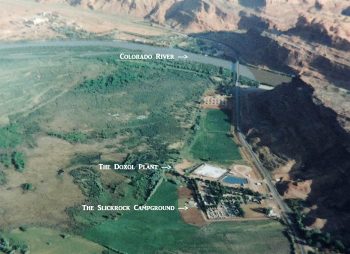
But just past sunset, a lightning bolt struck and exploded the Doxol propane tanks north of Moab. A fireball of ignited gas spewed from the south end of the tanks, like a giant flamethrower, and incinerated everything in its path, for over a hundred yards. By horrible coincidence, the Slickrock Campground, perhaps the most popular campground in Moab at the time, was just south of the Doxol tanks, separated only by a flimsy wood slat fence. This was late July, the peak of tourist season, and the campground was full.
Among those camped along the fenceline was Reuben Scolnik, who is a familiar name in The Zephyr and one of my dearest friends. Reuben, one of the original “arch hunters,” volunteered at Arches every year for a decade. I visited him at his site regularly; I had just seen Reuben the day before.
As the fire raged out of control, it became clear that the vast underground storage facilities on site, holding millions of cubic feet of propane, could ignite as well. In fact, it was possible that such an explosion had the power to destroy the entire north end of Moab.
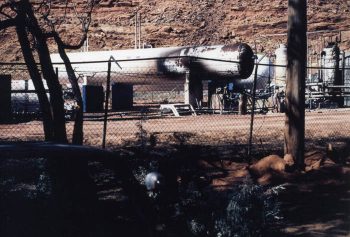
I knew none of these details when I heard a crackling and broken transmission on the two-way radio at the Devils Garden campground residence. It was NPS Ranger Carl Douhan and he was calling for “all units equipped for medical evacuation! Report to Allen Memorial Hospital!” Beyond the static I could hear the urgency in his voice. I keyed the mic and responded to the call. I told Carl I could be in Moab in 30 minutes, but that the ambulance was at the Devils Garden campground. “Come as quick as you can,” he replied and signed off.
I jumped into the ambulance and headed “down the hill,” as we used to call the 18 mile drive from the Devils Garden to the park entrance. When I reached the switchbacks above the Arches entrance, I was stunned by the view. All traffic had been stopped by law enforcement and the line of trucks and cars stretched north, up the Moab Canyon, and out of sight.
I called Douhan again and the orders were the same, so I pulled onto the emergency lane of US 163 (now US 191) and bypassed three miles of the traffic jam. I crossed the Colorado River bridge and was stopped at the river road junction by Moab Volunteer Fireman Corky Brewer. Corky and crew had pulled back from the fire and now they stood helplessly beside their pumper, expecting the worst.
“Corky, I got called to report to the hospital. Is it ok to go?”
“Hell NO,” Corky replied. “Those underground tanks could blow at any moment. Even we backed off. I wouldn’t go to Moab if I were you.”
But I was stupid and running on pure adrenaline by now and told him I thought I’d give it a try.
“It’s your funeral,” he said. “Good luck.”
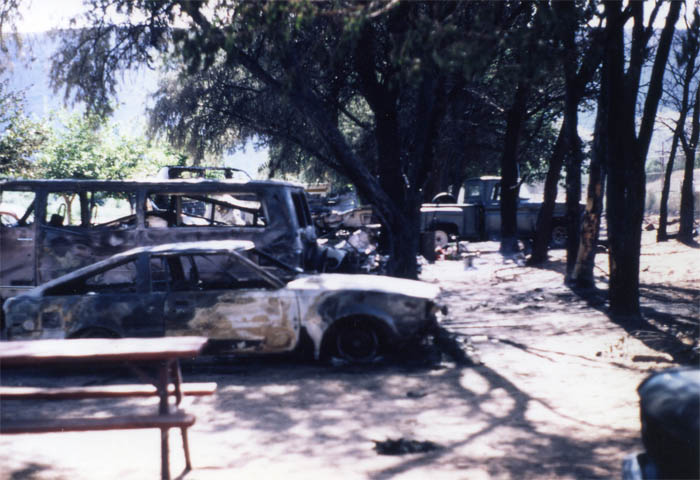
I punched the accelerator and off we went. (I’d collected two more rangers at the visitor center). As we approached the Doxol plant, I was concentrating on the road and my speedometer as I passed 85 mph. But it was impossible to ignore the orange tongue of flame still leaping from the end of the tank.
“Damn,” I muttered as the park ambulance shot past the raging fire.
Luck was on my side and we found our way to the hospital through the crowds and congestion. By the time we arrived, the injured had been flown to Grand Junction by LifeFlight and we were ordered to do “looting patrol,” although there seemed little if any threat of such activity–everyone was too scared to think criminally.
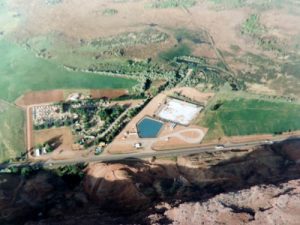
We aimlessly drove the streets of north Moab for hours, but all I could think about was Reuben. Earlier, as I raced past the inferno, it was clear that the fence had been incinerated by the blast. At 3 AM, we received word that there were fatalities among the injured and I feared the worst for my good friend. It was a long dark night.
Finally, an hour before dawn, the sheriff’s office announced that the threat of any greater explosions had passed, thanks mainly to the extraordinary efforts of Moab’s Doug Farnsworth. Doug, an employee at the propane plant, had plunged into the flames just after the explosion to shut off critical valves. Had he not risked his life to cut off the propane to the underground tanks, many additional lives may have been lost. Doug was severely burned in the process, but survived the fire and earned the gratitude of a community that has always remembered his act of heroism.
Finally, Carl Douhan notified us that we were “released” to return home. I headed straight for the campground. I had to know about Reuben. By now hundreds of people had descended upon the campground and all of it was illuminated by harsh and un-worldly emergency spotlights. We pulled off the highway, crossed the wide road and wandered into the dazed throng.
All I could see was a mass of strained faces. Where is he? Then, through the unfamiliar throng, I spotted a familiar sight—a godawful powder-blue, sweat-stained pork-pie hat that Reueben Scolnik wore 18 hours a day. His tired but relieved face was under it.
He saw me, shook his head and walked toward us. The first thing Reuben said to me…the very first thing was, “Sorry Jim, but the Honda burned up.”
A week earlier, Reuben had decided to sell me his Honda Trail 90, but the little motor bike had been parked by the fence when the tank blew. It was burned down to its frame and its small gas tank had exploded as well.
“For God’s sake Reuben! I’m just glad you’re alive!”
He gave me a big hug and we stood there together, in the burned out wreckage. He nodded grimly toward the fence, or where it had once been. “Those people didn’t stand a chance,” he said. “I had just spoken to them earlier….It’s too terrible to think about.” His voice trailed off.
It had been so close. The fireball passed within fifty feet of his trailer. Ten campers had been critically burned, and five of them, including two children asleep in a tent, eventually died. The red plastic running lights on Reuben’s trailer melted from the heat (see photos), but otherwise he was okay. I told him I’d be back at noon and he hugged me again.
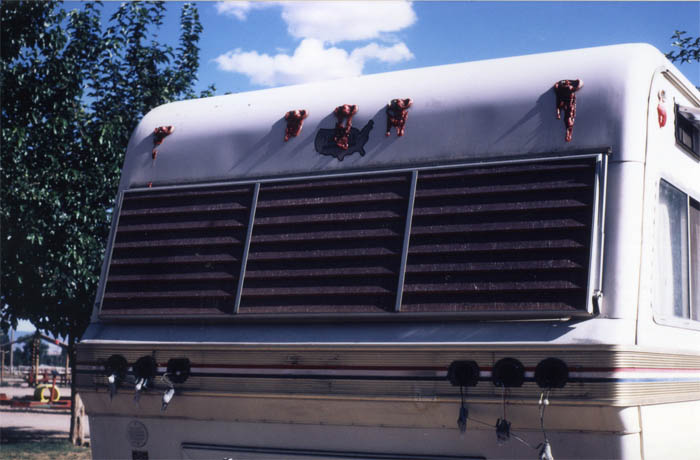
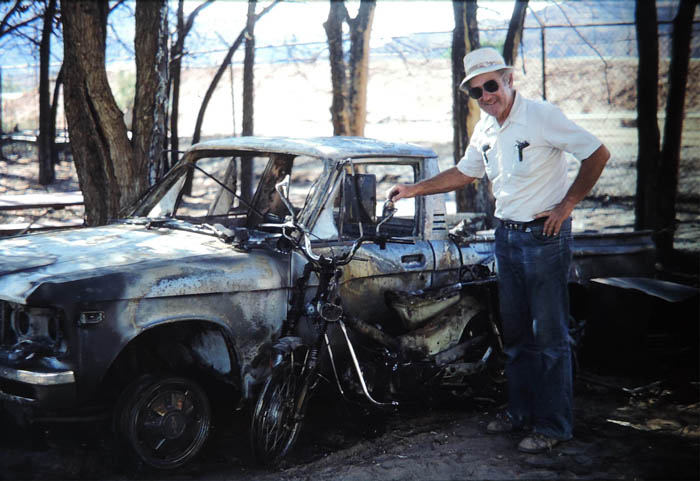
I made the long winding drive through the Arches and finally reached the campground at dawn, but I was still too wound up to eat or sleep. I just stood there, in that shabby little trailer, listening to the hum of my refrigerator. Then someone knocked on my door to complain about a plugged up toilet in comfort station #3.
“We’re having a real crisis up here with no toilet, ranger.”
All I could do was sigh. You have no idea.
Jim Stiles is Founding Publisher and Senior Editor of the Canyon Country Zephyr.
To comment, scroll to the bottom of the page.
Zephyr Policy: REAL NAMES ONLY on Comments!
Don’t forget the Zephyr ads! All links are hot!





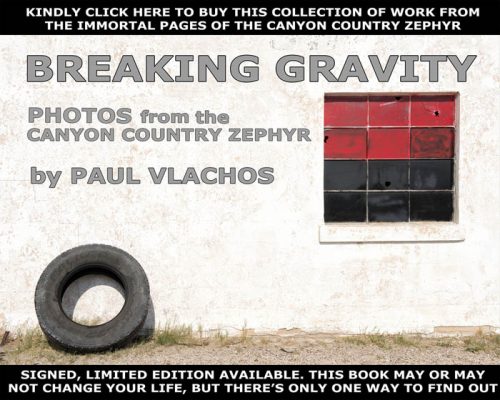
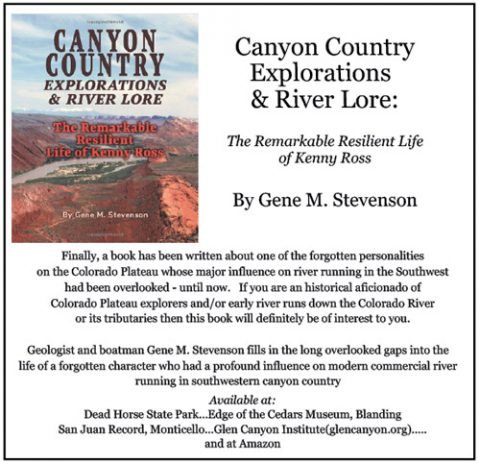
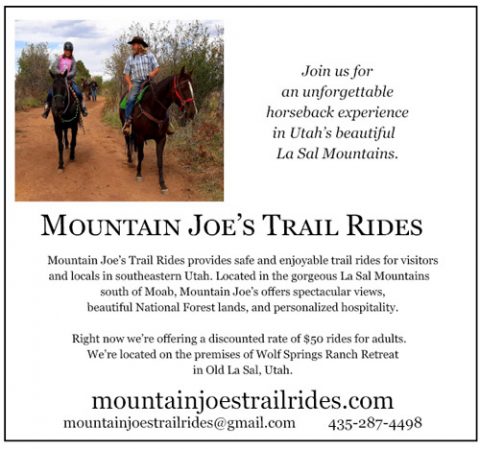
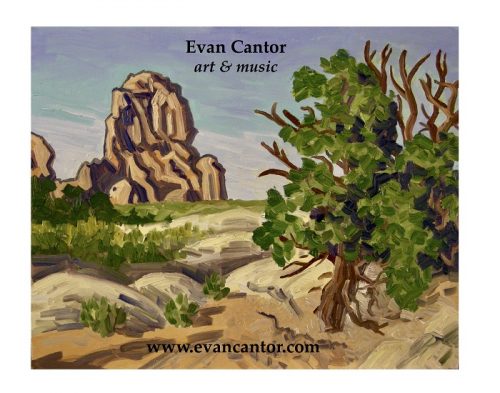
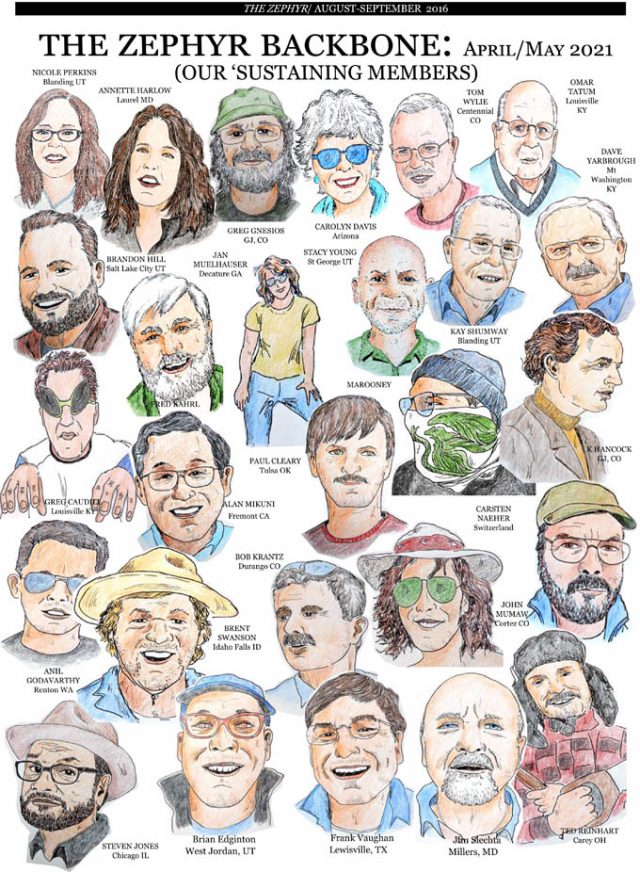
I was a stringer for the Salt Lake Tribune at the time and still have copies of their stories. It was an event I will never forget. We had just ended the Canyonlands By Night show and were just approaching the river bridge when the sky lit up. I went through the Campark the next morning taking pictures for the Trib. It was a terrible site.
Wow, what a gripping story! I’m just thankful your friend Rueben survived.
Jim – thanks for running those stories about DOXOL Fire back in 1981. I was on a Deso-Gray Canyon trip when that happened; got off river at Swasey’s. I was living in Denver at that time, so we stayed on I-70 eastbound and avoided the mess we had heard about in Green River. I knew several folks living in Moab at the time, and all had broken windows, and minor damage from that explosion.
When I was undergrad at Fort Lewis College, and on field trip to Canyonlands in 1968-69, my professor, Don Baars, said that the DOXOL storage spot was not a good location, due to shallow soil zone that overlies the Spanish Valley salt diapir. Unstable salt makes for lousy places to build. As you may know, the Paradox salt structure (diapir) is over 12,000 ft thick that underlies all of Moab Valley, and soil horizon is only a couple hundred feet thick, at most, down the valley. I can send you published Geology reports and cross-sections that prove this, as well as my own work. NaCl concentration increases in Colorado River immediately below Moab, so river is already cutting into salt section and continues to do so thru Cataract Canyon; thus the slide blocks and big rapids thru “tilted park” and the arcuate slumping forming the Needles District geology.
I tried to Google when the old airport had an accident that pretty much forced FAA to have airport moved out of south valley to present location. This piece below mentions some of why they moved the airport, but I recall that it was a Frontier Flight (DC-3 tail-dragger) that dropped a wheel thru pavement that was final straw, but can’t find any reference; do you know about this? Seems like it happened in early 1960s, but not sure.
Reference to old air strip in Moab Valley:
http://www.airfields-freeman.com/UT/Airfields_UT_SE.htm
Anyway, I have always looked at all this development in Moab Valley thru the eye of a geologist, and knowing that natural ground water seepage as well as humans watering the golf course and lawns all add to substrate erosion and ultimate collapse of home/motel foundations, streets and sewer lines and gas lines at some point in future. I’m amazed it hasn’t happened already.